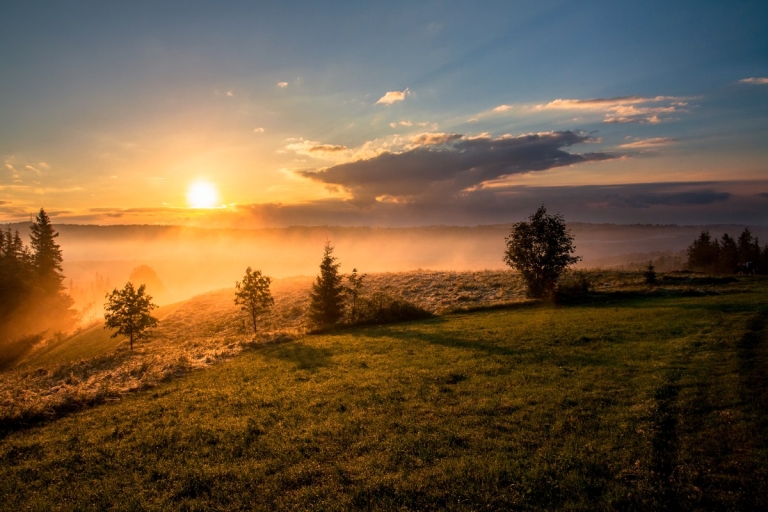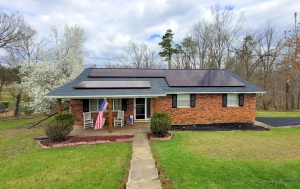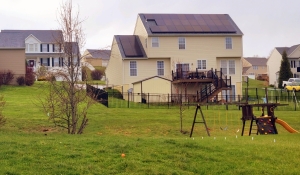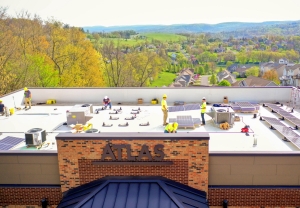
MORGANTOWN, W.Va. — Much of West Virginia enjoys about 85 percent as much sunlight as Miami, Florida, which means it's ideally suited to solar energy use, says the founder and CEO of West Virginia-based Solar Holler.
Thanks to technological advances, Dan Conant says solar energy is now an affordable and viable option for many residents of the Mountain State.

“The technology has come leaps and bounds from the '80s and '90s,” Conant said, though he emphasizes that each solar install depends on various factors.
“The exact numbers depend, of course, on where you are, shading, what angle your roof is pointing—all those different variables,” he said.
Solar Holler’s team creates 3D models of every rooftop they work on for those interested in switching to solar energy.
“I’m really proud of our team for what we do,” Conant said. “If someone says, ‘Hey, I’m interested in seeing what this could look like for me,’ we will create a 3D model of your roof, the chimneys, the trees, nearby buildings and hillsides and mountains.”

After the model is created, the team will run sunlight simulations so they know where the sun is every hour of every day of the year. They also study how the shading of nearby obstacles impacts how much sunlight will hit every square inch of the roof at every hour of the year.
“Then we run that through all of our electrical simulations so that we know exactly how much energy your system is going to produce as we’ve designed it,” Conant said.
While not every home may be a good candidate—a cabin situated in the middle of the forest, for example—Solar Holler is still able to give precise models and analyses for what the financial impacts will be, to put that information in front of folks to let them decide if that’s what they want to pursue, Conant said.

Headquartered in Shepherdstown with other offices and bases in Huntington, Parkersburg, Fayetteville, and Morgantown, Solar Holler’s employees live and work in West Virginia, building solar projects all across the state.
Conant said he is proud that Solar Holler unionized its crews in 2020. They’re members of the IBEW electrical union.
“That’s just huge from the state’s perspective, putting electricians to work and keeping jobs local—they’re also union jobs,” he said.
Aside from job creation—Solar Holler alone employs almost 100 full-time workers—solar energy can cost less for consumers in the long run, especially compared to rising utility costs.
“For most folks, they’re going to see that solar costs 10 to 15 to 20 percent less than what the utilities are charging,” Conant said.
'“Whether you’re a homeowner or a church or a school, you’re able to lock in your power prices,” he explained. “The beautiful thing about solar is, once it’s up there, it just sits there, and the fuel is free. The sunlight is free.”
There are just as many benefits of solar for commercial use; aside from labor, electricity is a big expense for companies, especially manufacturers.
“Electric can be a really high-ranking cost for a lot of our industries in the state, and making sure that you have control over those costs for the long haul, and control and knowledge so that you can budget, is huge,” Conant said
When someone purchases a solar energy system, they take out a loan to cover the costs, but Conant said payments on the loan cost less than what businesses and homeowners pay for utilities. Payments on the loan also do not change over the course of 20 years, even as utility and electric rates may increase.
“Once you pay off the system, all the monthly costs just go away,” Conant said. “It’s gravy beyond there. It really gives people control over the cost of power. In the case of solar, that is your option for choice.”
Many multinational and international companies, such as Apple, Amazon, and Google, have renewable energy targets and require access to clean energy in some cases.
“If you want to be able to sell to those companies, or if you want to be able to cite their data centers in West Virginia, they are requiring access to clean energy,” Conant said.
“Because of that, we’ve seen a wholesale shift in how the state is now treating renewable energy; it’s not just a nice thing to do once in a while, but it’s kind of mission-critical for the economy.”
Founded in 2013, Solar Holler originally worked with nonprofits, such as churches and homeless shelters, to figure out ways to make solar energy affordable for these organizations.
Having just celebrated their 1,000th solar install in Appalachia, Conant reflected on how far the team has come in the past decade.
“We’ve just kind of kept growing from there,” Conant said. “We have 95 full-time employees at this point, doing everything from the modeling and design work all the way through installation service.”
Sign up to receive a FREE copy of West Virginia Explorer Magazine in your email twice weekly. Sign me up!




























